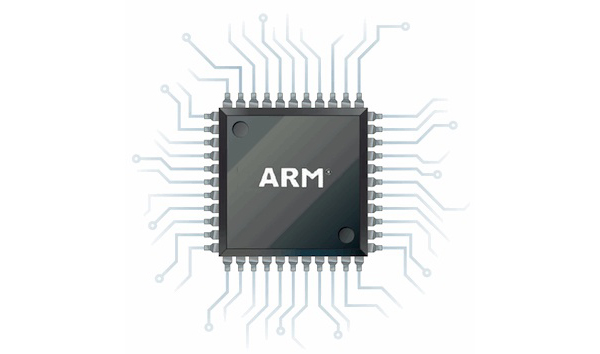The United Kingdom has given the world an impressive array of groundbreaking inventions that have transformed various aspects of modern life
From Isaac Newton’s reflecting telescope in 1668 to Frank Whittle’s jet engine in 1937 and Tim Berners-Lee’s creation of the World Wide Web in 1989.
British inventors have continually pushed the boundaries of science and technology. The development of penicillin by Alexander Fleming in 1928 revolutionised medicine, while Michael Faraday’s work on the electric motor and electromagnetic induction laid the foundation for modern electrical engineering.
Innovations like the steam engine, the world’s first underground railway, stainless steel, and the hovercraft have significantly advanced transportation and industry.
Contributions such as the structure of DNA by Francis Crick and James Watson, the MRI scanner by Sir Peter Mansfield, and the vaccination by Edward Jenner have had profound impacts on health and science.
These inventions reflect the ingenuity and creativity that have positioned the UK as a leader in innovation and progress.
Top 60 list of British inventions – in no particular order
The Reflecting Telescope (Isaac Newton, 1668)
The Seed Drill (Jethro Tull, 1701)
The Steam Engine (Thomas Savery, 1698; improved by James Watt, 1765)
The World’s First Underground Railway (The Tube) (1863)
Penicillin (Alexander Fleming, 1928)
The Jet Engine (Frank Whittle, 1937)
The Electric Light Bulb (Joseph Swan, 1879)
The World Wide Web (Tim Berners-Lee, 1989)
Stainless Steel (Harry Brearley, 1913)
The Electric Motor (Michael Faraday, 1821)
The First Programmable Computer (Charles Babbage, 1837)
The Thermos Flask (Sir James Dewar, 1892)
Television (John Logie Baird, 1925)
Vaccination (Edward Jenner, 1796)
The Steam Locomotive – (George Stephenson, 1814)
The Lawnmower (Edwin Budding, 1830)
The Hovercraft (Christopher Cockerell, 1955)
The Safety Bicycle (John Kemp Starley, 1885)
The Cat’s Eye Road Reflector (Percy Shaw, 1934)
The Structure of DNA (Francis Crick and James Watson, 1953)
Concorde (British and French collaboration, 1969)
The Fax Machine (Alexander Bain, 1843)
The Electric Transformer (Michael Faraday, 1831)
Electromagnetic Induction (Michael Faraday, 1831)
Radar (Sir Robert Watson-Watt, 1935)
The Spinning Frame (Richard Arkwright, 1769)
The MRI Scanner (Sir Peter Mansfield, 1971)
The ATM (John Shepherd-Barron, 1967)
The Marine Chronometer (John Harrison, 1761)
The Tin Can (Peter Durand, 1810)
The Hydrogen-Oxygen Fuel Cell (Sir William Grove, 1839)
The Floating Breakwater (Sir Samuel Bentham, 1804)
The Sinclair ZX80 (First Affordable Home Computer) (Sir Clive Sinclair, 1980)
The Universal Joint (Robert Hooke, 1667)
The Submarine Periscope (Sir Howard Grubb, 1914)
The Identity Card System (Sir Edward Henry, 1916)
The Collapsible Baby Carriage (Owen Maclaren, 1965)
Thermal Insulation (Lord Kelvin, 1894)
The Jet Engine (Sir Frank Whittle) – successfully tested in 1941
The Jet Engine Afterburner (Sir Frank Whittle, 1946)
Carbon Fibre (Sir Harold Kroto, 1961)
The Modern Ship Propeller (Francis Pettit Smith, 1836)
Automatic Windshield Wipers (Gladstone Adams, 1921)
The Computer From early mechanical computers to modern electronic computers by Charles Babbage, ADA Lovelace (1842) to modern electronic computers – Sir Clive Sinclair
The Fire Extinguisher (George William Manby, 1818)
The Postage Stamp (Rowland Hill, 1840)
The Flushable Toilet – Sir John Harrington (1596) – (Thomas Crapper, 1861)
Torpedo (Robert Whitehead, 1866)
The Triple Expansion Steam Engine (Arthur Woolf, 1804)
The Bicycle – Kirkpatrick Macmillan (1842)
IVF – Robert Edwards, Patrick Steptoe & Jean Purdy
The Telephone – Alexander Graham Bell (1876)
The Cat’s Eye – Percy Shaw (1934)
Pneumatic Tyre – Robert William Thompson (1847)
The Refrigerator – William Cullen (1755)
The Steam Engine – Thomas Newcomen (1712)
Cement – Joseph Aspdin (1842)
The Thermos Flask – Sir James Dewar (1892)
The Cat Flap – Sir Isaac Newton
The above are just a few examples of British ingenuity and creative inventive ability.



